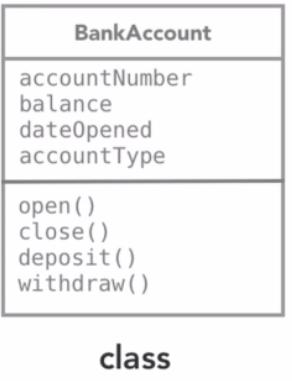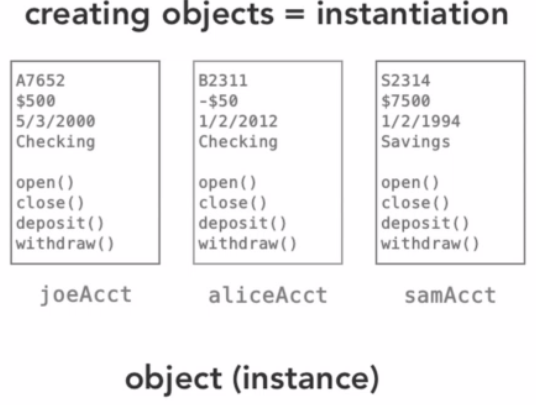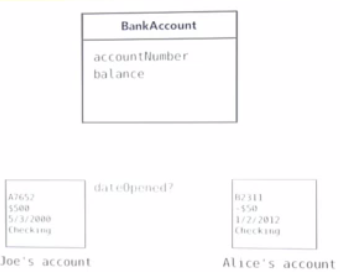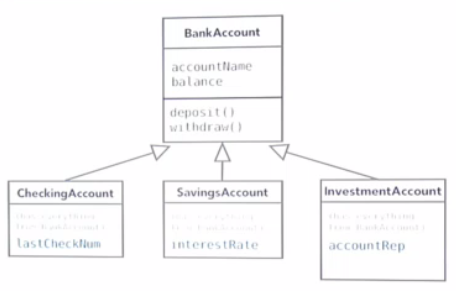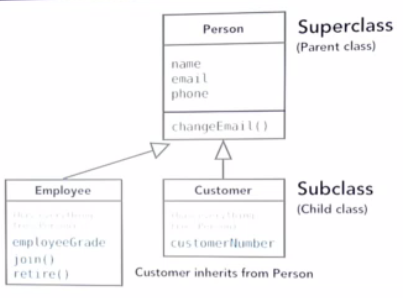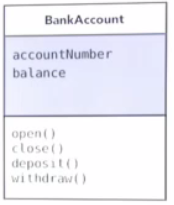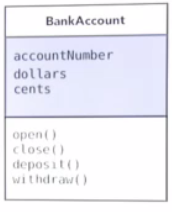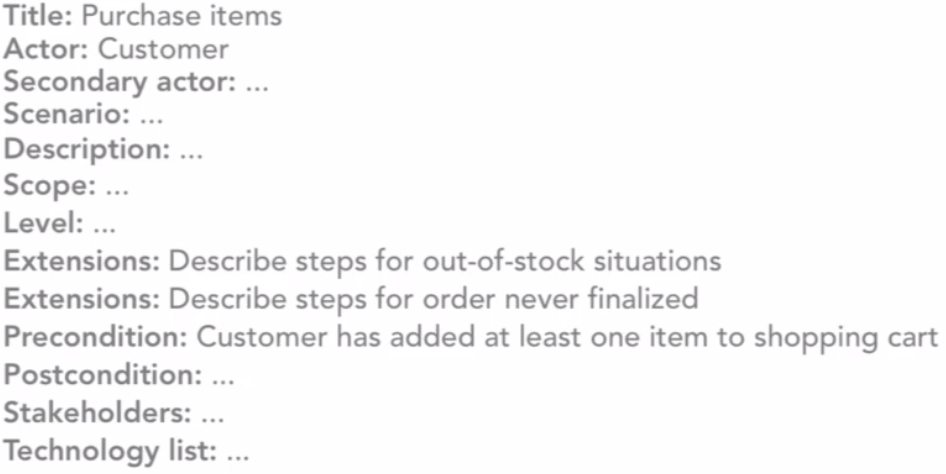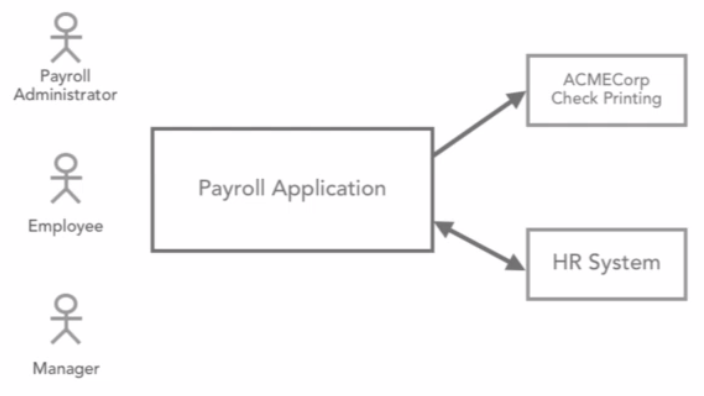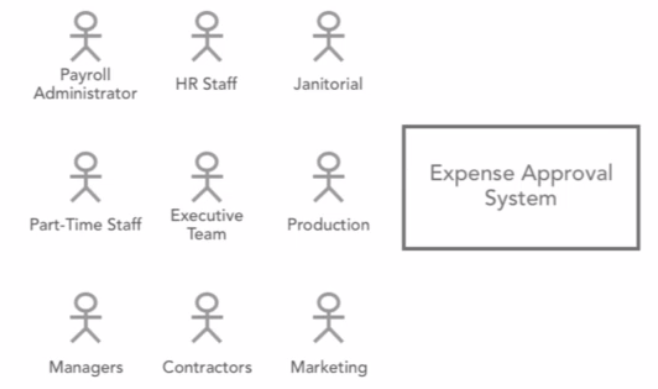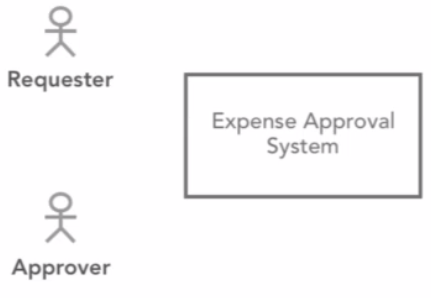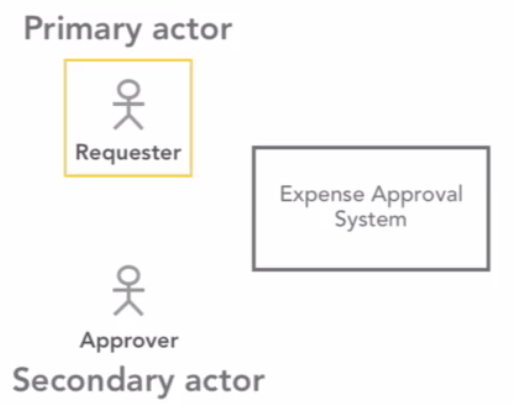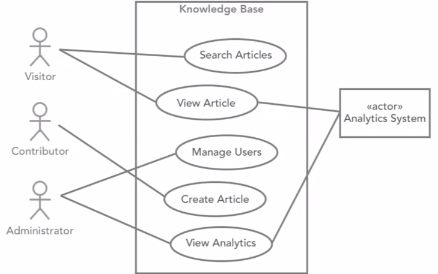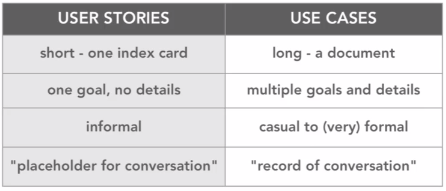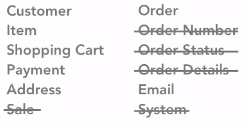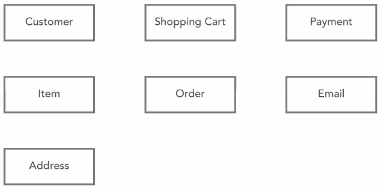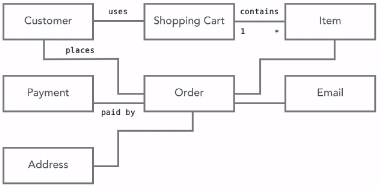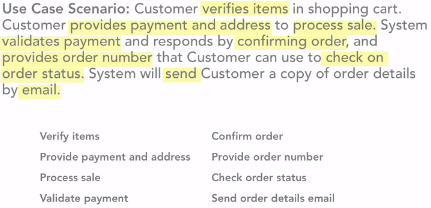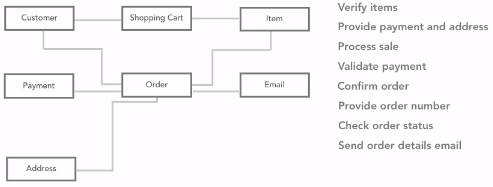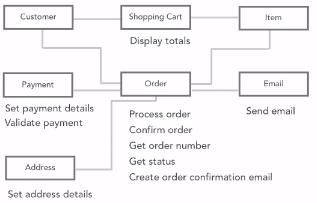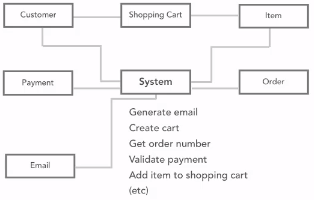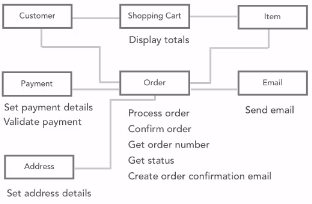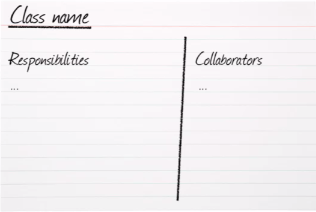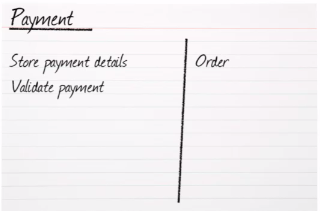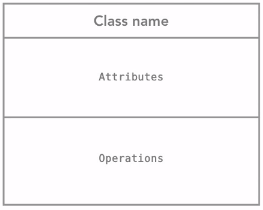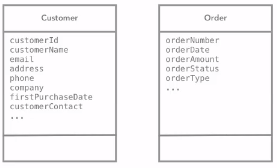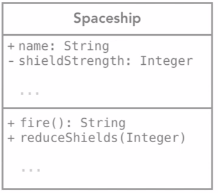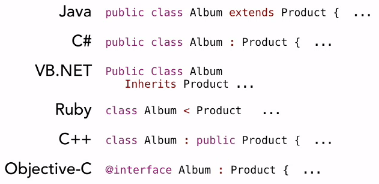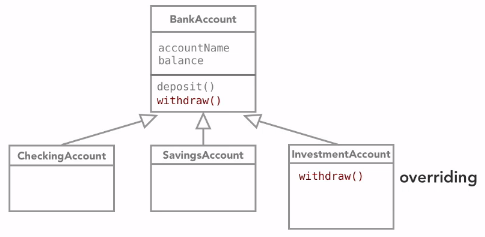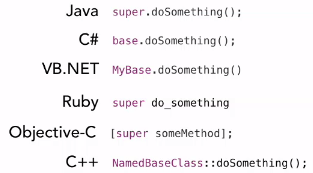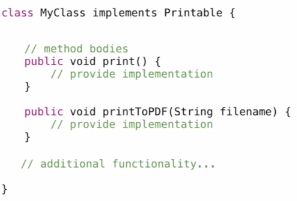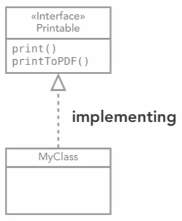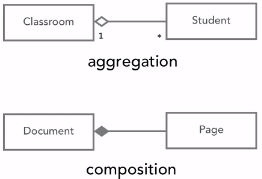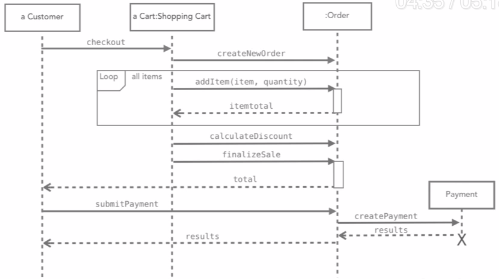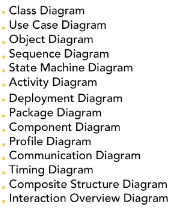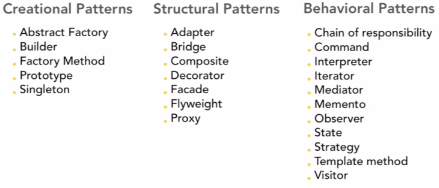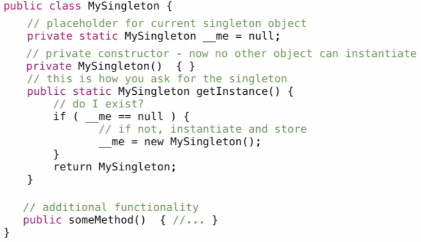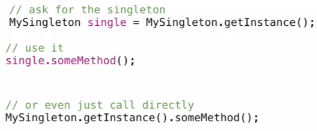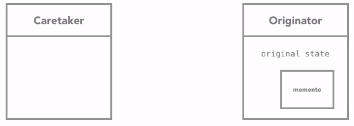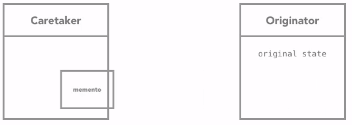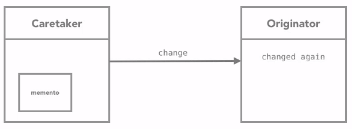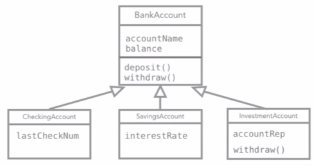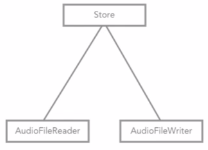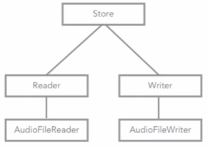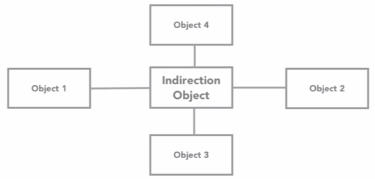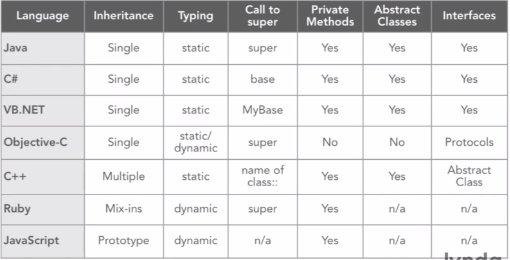Object Oriented Analysis, Design, & Development
Styles HotKeys:
Heading 1-6: C-A-[1,2,3,4,5,6]
code1: C-A-C,C
code-Output: C-A-C,V
Bullets: C-S-L
Chapter 1:
Software Development Methodologies
Waterfall
Analysis > Design > Implementation > Installation > Maintenance
Agile / Iterative approach
Repeating cycles, getting closer to the goal
Just enough design to move forward successfully
“Good Enough”
Object Oriented Languages
Separate program into modular blocks
Procedural Languages
ProLog – Logic programming language
Haskell – Functional programming language
What is an Object?
Not always physical items
Not always visible items
Can you put ‘THE’ in front of it?
Example:
Bank Account
- Property: Number
- Property: Balance
- Method: Deposit
- Method: Withdrawl
What is a Class?
The Blueprint of an Object
NOT the Object itself
type
name: what is it?
Employee, BankAccount, Event, Player, Document, Album
Properties, data
Attributes: what describes it?
Width, Height, Color, Score, FileType, Length
Operations, methods
Behavior: what can it do?
Play, Open, Search, Save, Print, Create, Delete, Close
Example:
Name: BankAccount
Attributes: accountNumber, balance, dateOpened, accountType
Behavior: open(), close(), deposit(), withdraw()
Class/ Objects
Existing Classes in OO Languages
- Most OOP have predefined classes: strings, dates
- Java Class Library
- .NET Framework BCL
- C++ Standard Library
- Ruby Standard Library
- Python Standard Library
4 Fundamental Ideas when Creating Classes
- Abstraction
- Polymorphism
- Inheritance
- Encapsulation
Abstraction
- Focus on the essentials
- Ignore the irrelevant
- Ignore the unimportant
Example:
Polymorphism ( “many forms”)
- Automatically do correct behavior if class can do many things
- With inheritance…can change base class when inheriting.
- a + b
- if string concatenation
- if integer, arithmetic
- Overriding method of base class is one form
- Inheriting when useful, overriding when useful
Example:
Can call the withdrawl() method regardless of account type
Inheritance
- Code Re-use
- Hand down attributes from one class to another – no need to re-write code
Person > Customer(+accountNumber)
Person > Employee(+companyName)
Example:
Encapsulation
- Bundle Attributes and behaviors in same class
- Restrict access to those attributes
- Reducing dependencies
Example:
Chapter 2: Object Oriented Design Process
- Gather Requirements
- What does the app need to do?
- Describe the app
- Build a simple narrative in common language
- Use cases and user stories
- Smallest number of stories to suffice
- Prototype of UI
- Identify the main objects
- Use stories/descriptions to create objects
- Should be basis for classes
- Describe the Interactions
- Work out how the objects work together
- Sequence diagram
- Create a Class Diagram
- Visual representation of class
Gathering Requirements
Functional Requirements:
- What does it need to do
- Feature
- Capabilities
Example:
System must:
- Allow user to search by customer’s last name.
Non-Functional Requirements:
- What else?
- Help
- Legal
- Performance
- Support
Example:
System must
- respond to searches within 2 seconds
- Helpdesk available by phone 24/7
FURPS / FURPS+
- Functional
- Usability
- Reliability
- Performance
- Supportability
- +Design
- +Implementation
- +Interface
- +Physical
Go for minimum set of requirements to satisfy needs
WHAT IS REQUIRED?
Status ok if:
- Not Applicable
- TBA
SOMETHING WRITTEN DOWN
UML is at Tool in this process
Chapter 03
Use cases
- Title – what is the goal?
- Actor – who desires it?
- Scenario – how is it accomplished?
Title
Short phrase, active verb
- Register new member
- Transfer funds
- Purchase items
Actor
Need to identify WHO is having the interaction
- User
- Customer
- Member
- Administrator
Scenario
Details of accomplishing this one goal
One paragraph:
Title: Purchase items
Actor: Customer
Scenario: Customer reviews items in basket, checks out and pays
As Steps:
Title: Purchase items
Actor: Customer
Scenario:
- Customer reviews items in basket
- checks out
- pays
Additional Details
Extensions: Describe steps for out-of-stock situations
Extensions: Describe steps for order never finalized
Precondition: Customer has added at least one item to shopping cart
Fully Dressed Use Case
Templates useful here
Other
Spend 1 or 2 days per iteration
Only written text, no diagrams
Identify Actors
Actor – anything with behavior outside who lives outside of app, but has goal to accomplish with it
Questions:
- Other computer systems/organizations
- External data sources, web services, other corp apps, tax reporting, backup systems
- Distinguish between roles/security
- Visitor, member, admin, owner
- Job titles / Departments
- Manager, payroll admin, Production Staff, Exec, Account
- Focus not on ROLE, but GOAL actor wants to accomplish
- Different roles may have SAME GOAL
Many different ROLES, but only two main GOALS
Identify Scenarios
Emphasize the goal of ONE encounter
GOOD:
- Purchase items
- Create new Document
- Balance accounts
BAD: Too Big
- Log in to application
- Write Book
- Merge Organizations
Multiple Scenarios
Use Case Writing Tips
- Keep it simple
- Use Active Voice.
- Omit Needless words.
- Shoot for one sentence
- Focus on intention, leave UI out of it
- Use Case prompts (helps ID actors)
- Who performs sys admin tasks
- Who managers users and security
- What happens if the system fails
- Is anyone looking at performance metrics or logs
Diagramming Use Cases
Knowledge Base Example
- Box Application name and Titles ( elipses )
- Titles ( elipse )
- Search Articles
- View Article manage users
- Create Article
- View Analytics
- Actors ( stick figures)
- Visitor
- Contributor
- Administrator
- Draw Lines from Actors to Titles
- <<external actor>>: Analytics System ( << >> )
User Stories
- Simpler and Shorter than Use Case
- Describes single small scenario from users perspective ( where & why )
- One-two sentences on index cards ( to force them to be short )
- Format
- As a (type of user)
- I want (goal)
- So that (reason)
- Example 1
- As a Bank Customer
- I want to change my PIN online
- So that I don’t have to go into a branch
- Example 2
- As a User
- I want to search by keyword
- So that I can find and read relevant articles
- Can brainstorm many scenarios quickly
- Focused on intention
- Serve as placeholders for deeper conversation on a feature
- Both stories and cases serve different purposes
- Whatever we write stories/cases, they are input for the next step
Chapter 4: Creating a Conceptual Model
- ID most important objects in the app
- Change from users/actors to wider scope
- Example: Product, shopping cart,
- Focus on the OO structure of the application
- Need requirements and user goals to consider structure
- A few hours per iteration
- Should be incomplete first time around
Identifying Objects
- Start picking out nouns
- Create noun list
- Consolidate list – things that belong to a more general class
- Box all the objects
- Conceptual Object Model
- Just using names of objects
- By Creating diagram easy to see responsibilities and relationships between objects
- Indicate main relationships/associations
- Add a short note for the association
- Better to have specific terms
- Symbols to aid in visualization
- One to many: 1-----*
Identifying Responsibilities
- Highlight Verbs
- Easy to find responsibilities
- Not obvious where the responsibilities belong
- Object should be responsible for itself
- Object has responsibility of an action, not what is requesting
- Customer is creating order, but is Order’s responsibility
- Order has many responsibilities while Customer has none
- A common trap is to assign too much responsibility to an Object
- Avoid Global Master Objects
- Responsibilities should be well distributed
CRC – Another Format To Use
- Class
- Responsibility
- Collaboration
- Card ( index card )
- Move related CRC Cards together
- Don’t go electronic yet
- Forced constraint only can have so many cards
- Too many cards can indicate another class is needed
- Fless out ideas next
Chapter 5: Creating Class Diagram
- Now closer to coding, official names encouraged
- Attributes ( Pascal Case ( thisVar” ) )
- Suggested Data Type ( : String )
- Actual syntax not important, general idea ok
- Default value ok too ( = “new product” )
- Operations
- get/set encouraged over change/read
- Parameters ()
- Return Type :()
- - denotes private (encapsulation)
- + denotes get/set
- - name
- Make private as much as possible
- +getName
- +setName
- Notes with line to item
Avoid Building Plain Data Structures
- Often people focus on the data, creating data structures
- Focus on what they DO
- Class has no behavior – revisit responsibilities
Transforming Class Diagrams to Code
Class Diagram
Example: Java
Example: C#
Example: VB.NET
Example: Ruby
Example: Objective-C
- Has two files that separate interface and implementation
Exploring Object Lifetime
- How are objects created
- What happens when they are created
- What happens when we are finished with them
Instantiation
- Create a new object
- “new” keyword
- Do you take part in the instantiation?
Constructor
- Special method that is called when object is created
Constructor in UML
Example: Java/C#/C++
- Created Method in the Class with the same name as the Class
Syntax for several languages
Java/C#/C++
- className()
VB.NET/Python
- new()
Ruby
- initialize()
OC
- init()
Overloaded Constructors
- multiple constructors with same name
- each takes different number of parameters
Overloaded Constructor in UML
Destructors / Finalizers
- Called when an object is destroyed/deallocated/released
- Use for releasing resources
- FileIO/ Document Open
Static/Shared Members
- Method shared cross all members of a class
- Many accounts share one interest rate
- 1000s of accounts/variables
- Don’t create a global variable for everything
- Class Level variable vs. Instance Level variable
- Value can change, but there’s only one of them
Creating Static Variables
Accessing Static Variable
- Use the name of the class to access
- savingsAccount.interestRate =- 0.5;
Creating Static Methods
- Static Methods CANNOT work with Instance Variables
- Static Methods CAN work with Static Variables
Showing Static Members in UML
Chapter 6: Inheritance
Inheritance
- Describes “is a” relationship
- Example 1
- A Car is a Vehicle
- Bus is a Vehicle
- Car is a Bus
- Example 2
- An Employee is a person
- A customer is a person
- Example 3: multiple inheritance
- A Corvette is a car is a vehicle
- Example 4: No relationship
- Bank is not a Bank Account
- Bank Account is not a Bank
- A Checking Account is a Bank Account
- A Savings Account is a Bank Account
UML
- Open Arrow
- Parent/Super Class
- Child Sub Class
- Children can ‘override’ Parent Class
- To REPLACE or ADD Parent Class implementation
- Don’t over-inherit or over-think
- Sub Classes will present themselves
- Album
- Book
- Movie
- THEN create Super Class and strip out similar behaviors and put into Super Class
- Should be obvious
- Can be identified from top-down or down-up
- Not all classes will have inheritance
Example: Java
- Object is Super Class of everything else
- Be weary of more than 2-3 levels of inheritance
Inheritance in Varying Languages
Overriding in Varying Languages – See Language Ref
Calling a Method in the Super/Parent/Base Class in Varying Languages
Composition
- Class that is never instantiated
- Abstract Class
- Never instantiated
- Used as blueprint only
- Used for inheritance only
- Concrete Class
- Instantiated
User Interfaces
- Defining Interface Contracts
- Has no functionality and only defines structure
- Create a new class and choose to use an interface
- More classes that use the contract, the better
- Easier to manage/maintain
- Don’t need to know how the Object works, just adhere to the Interface
- Using Interfaces
- Interface Title as <<Interface>>
- Dotted Line to represent Interface- - - ->
- “Implement an Interface”
- “Program to an interface, not an implementation”
- Then developer can choose how to implement the methods, not restricted
- Interfaces preferred over inheritance, cleaner model
- Objective-C uses “Protocol”: list of method signatures
- “Conform to a protocol”
UML
Aggregation
- Associations
- Lines between objects suggesting some sort of interaction
- Inheritance with Arrow
- Describe an obvious relationship between objects
- Object can be built off other objects
- “HAS A” vs. “IS A”
- Customer has a address
- Car has a engine
- Bank has many bank accounts
UML
- Unfilled diamond <>
- A Classroom HAS MANY Students
Composition
- Composition implies Ownership
- Not just “HAS A”
- When Object is destroyed, associated Objects are destroyed also
- Might need to write a deconstructor to remove
- Difference
- Removing Classroom, Students should still persist
- Removing Document, removes Page
UML
Chapter 7: Sequence Diagrams
Sequence Diagrams
- Does not describe entire system
- Only one interaction
- Start with object boxes for participants in interaction
- If using class name, use colon
- A Customer
- a Cart: Shopping Cart
- :Order
- Draw Lines for interactions
- Method names with (parameters)
- createNewOrder
- AddItem(item, quantity)
- Itemtotal
- Surround loops with a Frame
- Don’t get too detailed, just basic interactions
- For short-lived interactions, use X for the line
- Send ----------→ (solid line)
- Return - - - - - - → (dotted line)
- Should be able to work with BA (non-developer)
- No need to diagram EVERY part of system
- Only for situations that are not vary clear
- Could identify need for new Class
UML Diagrams
- 14 types
State Chart
- Focused on a single object
- How it changes state over time
- Rectangle with rounded corners
Activity Diagram
- Detail steps, transitions, and decisions that occur as flow through part of the system
- Partitions/swim lanes
- Represent different classes/business units that handle activity
UML Tools
Wikipedia.org has a list of UML tools
Chapter 8
Design Patterns
- Gang of Four / “GoF”
Creational Patterns
- Abstract Factory
- Builder
- Factory Method
- Prototype
- Singleton
Structural Patterns
- Adapter
- Bridge
- Composite
- Decorator
- Façade
- Flyweight
- Proxy
Behavioral Patterns
- Chain of Responsibility
- Command
- Interpreter
- Iterator
- Mediator
- Memento
- Observer
- State
- Strategy
- Template method
- Visitor
Singleton Design Pattern
- Want only ONE of a class
- NOT STATIC, since that is 0
- SPECIFICALLY ONE
Example: Java
- Create a static variable that acts as a placeholder for a Singleton (__me)
- Create new method
- Lazy Singleton, create upon FIRST request
- Call static method “getInstance()”
- Do I exist? If no, return the object
- If so, do not create one
- Calling
Memento Design Pattern
- Managing change in a way that doesn’t violate encapsulation
- Used for “UNDO” type functions
- Arose naturally in the programming world and will be encountered often
Originator
- original_state
Caretaker
- When and why Originator needs to save or revert its state
- Request originator to save itself
Pattern
- Originator creates memento
- Sends memento to Caretaker for storage
- Request can come from anywhere, not just Caretaker, though caretaker always does the storing
- Upon “REVERT” request, the Caretaker sends memento back to the originator
- Originator back to original state
Chapter 9: Object Oriented Design Patterns
- Language will not prevent poor design
- Apply good OO practices
- Not design patterns, but are general rules to follow
- Did I design this well?
General Software Development Principles
- DRY: Don’t Repeat Yourself ( duplicated code )
- Don’t block copy code over and over, create a function/method
- One place in the system that takes care of a problem
- YAGNI: You Ain’t Gonna Need it ( unnecessary code )
- Solve today’s problem
- Don’t code for tomorrow
Code Smells
- Long method (200-300 lines)
- Very short (or long) identifiers
- Pointless Comments
//this creates i and sets it to zero
int i = 0;
- God Objects
- Objects that do everything
- Feature Envy
- Class does very little, but use methods of another class
SOLID
- Checklist of things to consider and look out for
SOLID
- S: Single Responsibility Principle
- O: Open/Closed Principle
- L: Liskov Substitution Principle
- I: Interface Segregation Principle
- D: Dependency Inversion Principle
S: Single Responsibility Principle
- An object should have one reason to exist, one reason to change – one primary responsibility
O: Open/Closed Principle
- Open for extension, but closed for modification
- Once written and working, don’t change old code, create new code
- Inheritance
- Class created, then new feature arises
- Create new method/subclass
L: Liskov Substitution Principle
- Derived classes must be substitutable for their base classes without altering correctness of the program
- Extension of inheritance
- Derived classes should be able to pass subclasses around in lieu of base class
- Never should be able to use all BUT ONE subclass
I: Interface Segregation Principle
- Multiple specific interfaces are better than one general purpose interface
- Interfaces should be as small as possible
- If too large, split into smaller Interfaces
- No class should be forced to support huge interfaces it doesn’t need
D: Dependency Inversion Principle
- Depend on abstractions not on concretions
- Don’t tie concrete objects together, but deal with abstractions to reduce dependencies
- Disconnect two very concrete classes
- Insert new layer, abstract class
- Store class isn’t dependent on the two AudioFile classes
- Now any low-level class that inherits from Reader/Writer can be used
- MovieFile Reader/Writer
- GameFile Reader/Writer
- Store object doesn’t need to be altered for updates
- Flexibility
GRASP
GRASP
- GRASP: General Responsibility Assignment Software Patterns
- Focus on Responsibility
- Who creates this object
- Who takes care of receiving information from user interface
- Compatible with SOLID
9 Principles
- Creator
- Controller
- Pure Fabrication
- Information Expert
- High Cohesion
- Indirection
- Low Coupling
- Polymorphism
- Protected Variations
Expert/Information Expert
- Assign the responsibility to the class that has the information needed to fulfill it
- Object should take care of itself
- Example
- Customer, Shopping Cart, Item
- “Current Total” belongs to the Shopping Cart as it knows most about the total
Creator
- Who is responsible for creating an object
- How the objects are created
- Easy to tell interactions
- Not easy to tell how they come into being
- Sequence diagram can help
- Q’s
- Does one object contain another? (Composition)
- One object closely use another
- Know enough to make another object?
Low Coupling / High Cohesion
- Coupling: the level of dependencies between objects
- If one objects connects tightly to other objects
- Things can break easily
- Reduce dependencies to a minimum
- Cohesion: the level that a class contains focused, related behaviors
- AIM is LOW COUPLING, HIGH COHESION
- Don’t connect UI elements directly to business objects
- Concept: Model U Controller
- Well described idea within the app
- Create controller class for UI and Business Object
Pure Fabrication
- When the behavior does not belong anywhere else, create a new class
- Rather than force into an existing class ( decreasing cohesion ), create new class
Indirection
- Decrease coupling between objects
- Ro reduce coupling, introduce an intermediate object
Polymorphism
- Automatically correct behavior based on type
- As opposed to: conditional logic that checks for particular types
Protected Variations
- Protect the system from changes and variations
- Identify the most likely points of change
- Use multiple techniques: encapsulation, LSP, OCP
- Interfaces, Substitution, Overriding Classes, Open/Closed Principle
Chapter 10
Feature Support Across Languages
- Inheritance
- Typing
- Most are static typed
- Dynamic languages have flexibility without the static typing
- Call to super
- Private Methods
- Protecting classes
- Abstract Classes
- Interfaces
Resources
- Initial stage of determining requirements
- “Software Requirements” by Carl Regas
- Use Cases
- “Writing Effect Use Cases” by Alistair Cockbens
- “User Stories Applied for Agile Software Development” by Mike Koehn
- UML
- “UML Distilled” & “Refactoring” by Martin Fallor
- Design Patterns
- “Gang of Four” (C++)
- “Head First Design Patterns” (Java)
- Log in to post comments

